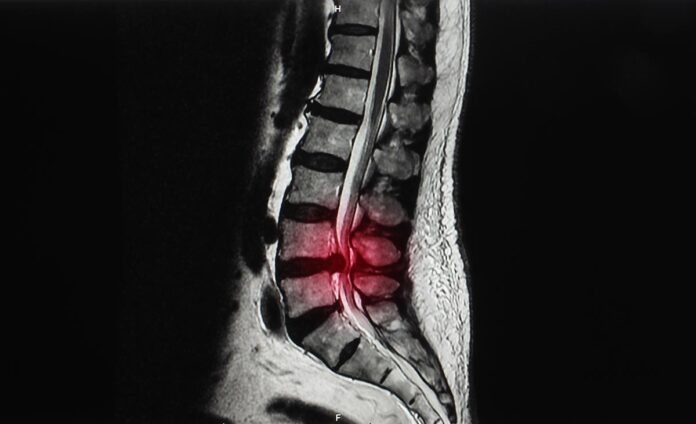Spinal stenosis is a condition characterized by the narrowing of the spaces within the spine, which can put pressure on the nerves traveling through the spine. This pressure on the nerves can cause pain, numbness, weakness, and other symptoms. Here’s an overview of spinal stenosis including symptoms, causes, treatment, and prevention:
Symptoms:
- Pain: Often in the lower back or neck, radiating to the arms or legs.
- Numbness or tingling: Usually in the extremities (arms, hands, legs, or feet).
- Weakness: Difficulty walking or performing daily activities due to muscle weakness.
- Cramping: Muscle cramps or spasms, especially after standing or walking for long periods.
- Loss of balance or coordination: Difficulty maintaining balance due to nerve compression.
Causes:
- Aging: Degenerative changes in the spine, such as arthritis or thickening of ligaments, are common causes.
- Herniated discs: Discs between vertebrae can bulge or rupture, pressing on spinal nerves.
- Trauma: Injuries to the spine can cause spinal stenosis.
- Congenital factors: Some people are born with a narrow spinal canal, predisposing them to stenosis.
- Tumors: Abnormal growths within the spine can cause compression of spinal nerves.
Treatment:
- Medications: Pain relievers, anti-inflammatory drugs, muscle relaxants, and nerve pain medications may help manage symptoms.
- Physical therapy: Exercises to improve strength, flexibility, and posture can alleviate symptoms and improve mobility.
- Steroid injections: Corticosteroids injected into the spine can reduce inflammation and provide temporary relief from symptoms.
- Surgery: In severe cases where other treatments fail, surgery may be necessary to decompress the spinal nerves and stabilize the spine.
- Alternative therapies: Acupuncture, chiropractic care, and massage therapy may provide relief for some individuals.
Prevention:
- Maintain a healthy weight: Excess weight puts added stress on the spine and can accelerate degenerative changes.
- Exercise regularly: Strengthening core muscles and maintaining flexibility can help support the spine and reduce the risk of stenosis.
- Practice good posture: Avoid slouching or sitting for long periods in positions that strain the spine.
- Use proper body mechanics: Lift heavy objects with your legs, not your back, and avoid twisting motions that strain the spine.
- Quit smoking: Smoking can accelerate degenerative changes in the spine and increase the risk of spinal stenosis.































